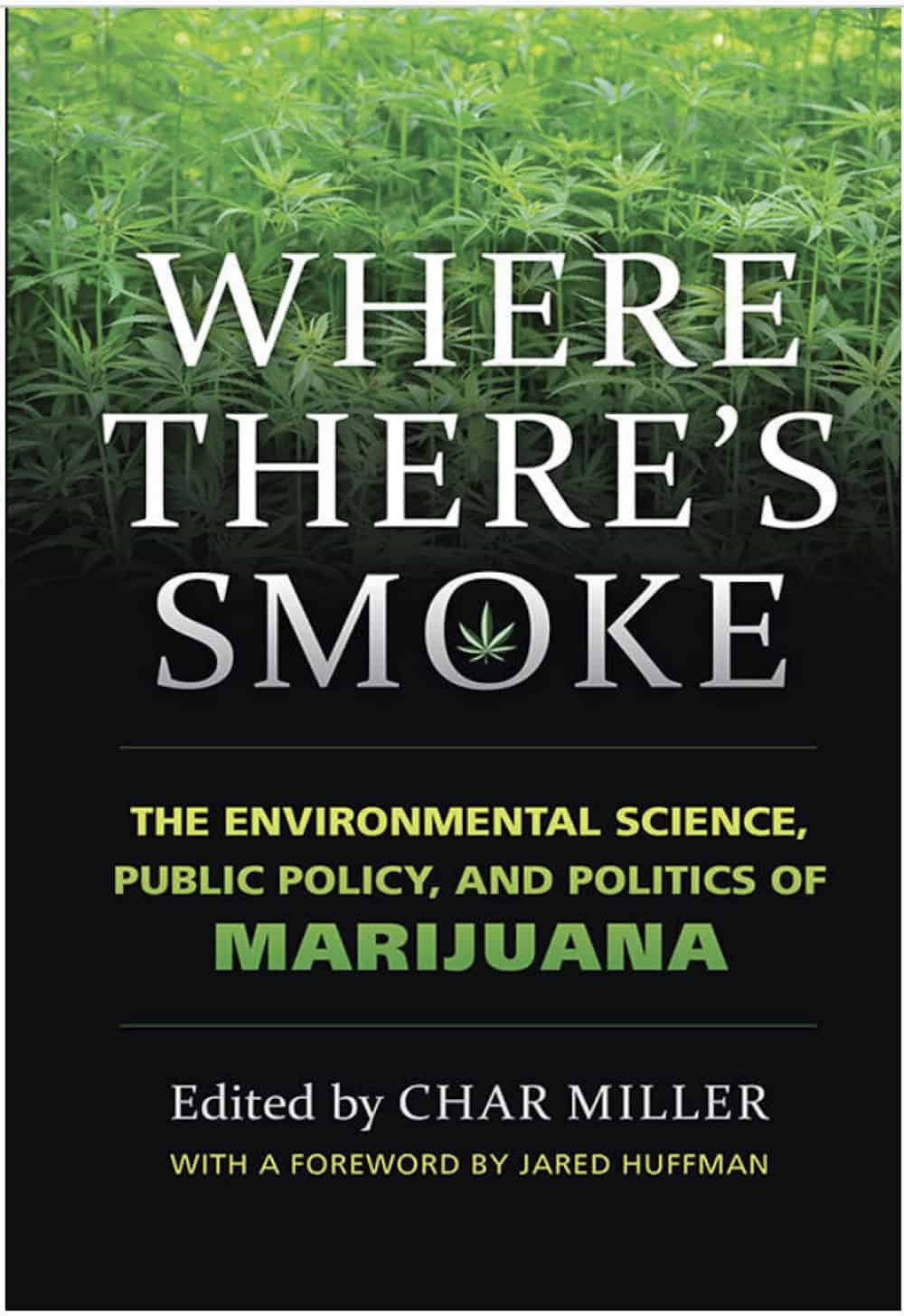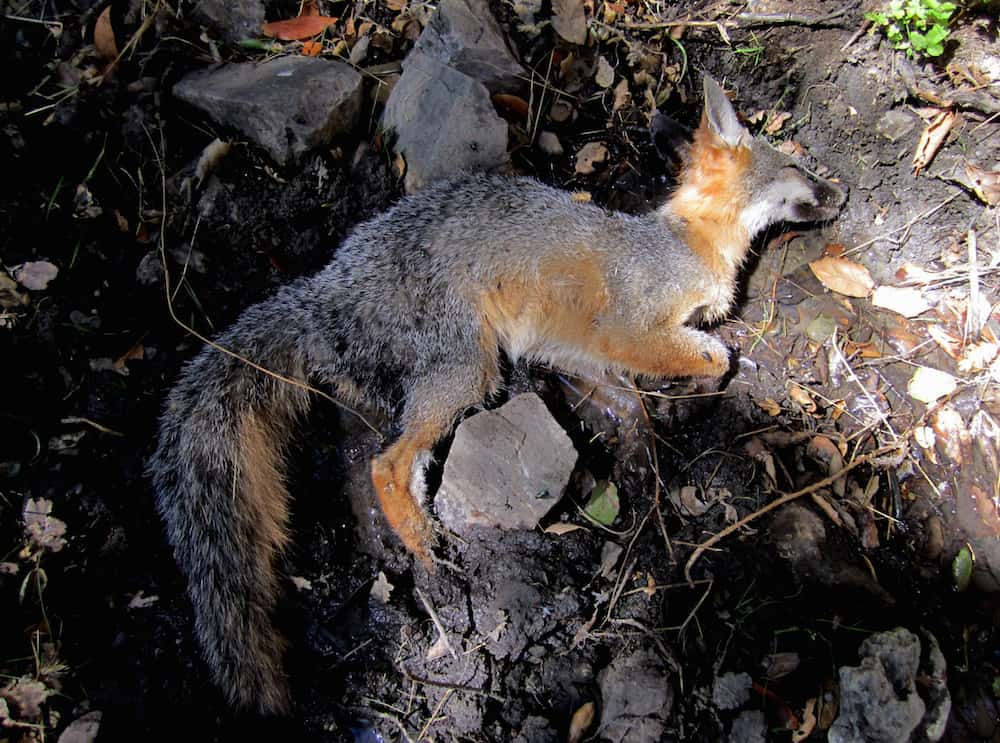“There is nothing inherently ecological about the cannabis plant. The environmental problems associated with cannabis are problems of social policy. The ecological impacts are the result of prohibitionist policy regimes that began in the early part of the 20th Century.” Dr. Anthony Silvaggio, author of two chapters in Where There’s Smoke: The Environmental Science, Public Policy, and Politics of Marijuana, uses this quote to begin panel discussions.
And this book proves his point. It’s a must-have for any so-called cannabis expert, policy maker, academic, journalist, activist, or pot smoker. The environmental impacts, sociology, and modern political history of cannabis in the United States are covered in exhaustive and innovative detail that’s academically rigorous and accessible to civilian readers. Recurring throughout the book are pointed examples of how cannabis prohibition and regulation exacerbate environmental damage and magnify social inequity.
Where There’s Smoke: The Environmental Science, Public Policy, and Politics of Marijuana is a truly cautionary tale, showing how well-intentioned proponents of cannabis legalization often provoke the very environmental and social injustices they hoped to ameliorate. Medical and recreational cannabis regulations invariably keep prices so high that unregulated growers will always have an incentive to continue their work.

Courtesy of University Press of Kansas
While decriminalization helps keep some people out of jail, penalties for causing environmental damage manifest slowly and require agents from environmental protection agencies to work in conjunction with law enforcement in dangerous, cumbersome conditions.
No matter how many states legalize, decriminalize, or medicalize cannabis, federal prohibition guarantees jobs for those bold enough to grow for illicit markets. Asset forfeiture laws further incentivize cannabis farming on public lands. The book’s chapter covering the complexities of Appalachian cannabis farms provides the most prescient and interesting examples of how difficult it’ll be to ever fully regulate cannabis. Overlapping and murky ownership of state, national, and private lands combine to make a perfect storm of vagaries that growers (from moonshiners to foreign “cartels”) have been taking advantage of for decades.
Chapters punctiliously detail how Colorado, Oregon, Washington, California, and Washington D.C. created their current regulatory structures and provide valuable insights into potential pitfalls. Efforts designed to create access and regulate medical cannabis simultaneously criminalize those who can’t afford testing and licenses. Informal, sustainable collectives and distribution networks are destroyed while privileged (and mostly white) people get rich.
Environmental chapters focus primarily on the pollution left by trespass grows on public and tribal land in California. Exhaustive, Ph.D. level research describes how massive, unregulated cannabis farms in parks and on reservations deplete water sources relied upon by people, salmon, and steelhead trout. Fertilizers, herbicides, and rodenticides further conspire to kill bobcats, birds, fishers, and foxes.

A grey fox poisoned by a California trespass grow/ Courtesy of Lt. John Nores Jr.
The fact trespass grows leave ugly ecological scars is not newsworthy, but their increasing numbers and size in the wake of legalization is. The staggering amount of poisonous chemicals used in some of these operations, their ubiquity, and how difficult they are to clean up are all cause for serious concern. These issues are covered in the text by scientists, researchers, and even an officer from a marijuana task force. And they demonstrate how high taxes, fees, contradictory laws, and perpetually dropping prices incentivize farmers to cultivate in remote, unregulated areas.
Particularly compelling is the book’s coverage of undocumented laborers and how they are exploited by “cartels” and prosecutors. The typical narrative portraying Mexican criminal groups growing tens of thousands of plants in a state park or national forest is described from the perspective of the low-level workers who tend the plants and provide ancillary services. A Mexican defendant in a case involving 91,000 plants was a cook who hadn’t been told he was going to work on a pot farm. While other arrestees pled guilty, provided information, and received reduced sentences, the cook didn’t know anything of value to prosecutors. After serving more than ten years in federal prison, he will be deported. Like many undocumented workers, he was unable to successfully mount a duress defense because he couldn’t prove threats of violence made by his employers against family members living overseas.
Where There’s Smoke does not examine the environmental footprint caused by cannabis consumers, think: butane torches, lighters, and the obscene amounts of packaging used in regulated markets. It also does not address the solvents and chemicals used to produce concentrates. Further, it gives short shrift to estimates that 3 percent of California’s electricity is used to power lights and other equipment for indoor cannabis farms. Currently, few regulations exist that’ll help lessen cannabis’ unsustainable carbon footprint.

Plastic packaging surrounds tiny amounts of cannabis at Washington shop/ John Veit
The book offers some solutions to the marijuana morass. Most important among them is the need for federal action to remove cannabis from Schedule I enforcement. The ripple effects of its current classification—asset forfeiture, inflated prices, the inability of public institutions to grow and study cannabis—have set in motion the cacophony of chaotic, stop-gap measures that contribute to cannabis’ bizarre array of contradictory regulations.
Other solutions are touted, including extensive tax breaks for farmers who use sustainable methods and limits on the size of regulated farms. Currently, California’s Proposition 64 is scheduled to allow unlimited, Type 5 farms in 2020 that will resemble the massive, unsustainable, water-intensive almond and citrus groves that cover California’s Central Valley.
Among the most valuable assets in this book are the extensive bibliographies that conclude each chapter and will undoubtedly serve students and journalists for decades. Where There’s Smoke has only scratched the surface in describing cannabis’ remarkably complex political history and environmental impacts. Hopefully, the University of Kansas Press will produce more volumes as states and countries continue to legalize. Similarly, thorough academic review is needed in countries where cannabis was never stigmatized in the first place, like Nepal and the Democratic Republic of Congo. Canada, Jamaica, Uruguay, Israel, and states like Nevada and Massachusetts that are struggling to implement new marijuana regulations, could benefit from their examples.
The post Book Review: “Where There’s Smoke” Will Light a Fire in You appeared first on High Times.




0 DL LiNKS:
Post a Comment
Add yours...